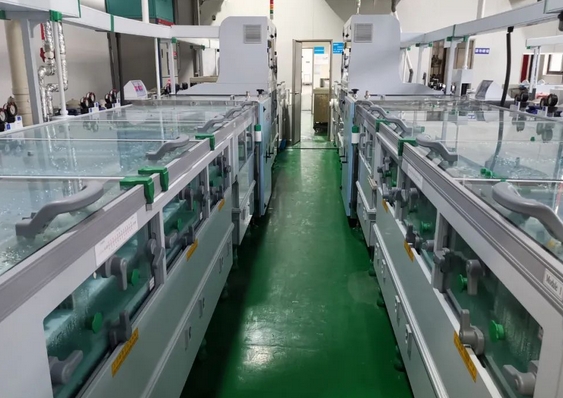- 05
- Oct
Circuit board preprocessing leads to process problems
PCB board preprocessing leads to process problems

1. There are many strange problems in the PCB process, and the process engineer often takes the responsibility of forensic autopsy (analysis of adverse causes and solutions). Therefore, the main purpose of initiating this discussion is to discuss one by one in the equipment area, including the problems that may be caused by people, machines, materials and conditions. I hope you can participate in and put forward your own opinions and opinions
2. Be able to use the process of pretreatment equipment, such as inner layer pretreatment line, electroplating copper pretreatment line, D / F, anti welding (resistance welding)… And so on
3. Take the pre-treatment line of anti welding (resistance welding) of PCB circuit board as an example (different manufacturers): brushing and grinding * 2 groups – > water washing – > acid pickling – > water washing – > cold air knife – > drying section – > solar disc receiving – > discharging and receiving
4. Generally, steel brushes with brush wheels of #600 and #800 are used, which will affect the roughness of the board surface, and then affect the adhesion between the ink and the copper surface. Under long-term use, if the products are not placed evenly on the left and right, it is easy to produce dog bones, which will lead to uneven coarsening of the board surface, even line deformation and different color difference between the copper surface and ink after printing, Therefore, the whole brush operation is required. Before the brush grinding operation, the brush mark test shall be carried out (water breaking test shall be added in case of D / F). The degree of brush mark measured is about 0.8 ~ 1.2mm, which varies according to different products. After the brush is updated, the level of brush wheel shall be corrected, and lubricating oil shall be added regularly. If water is not boiled during brush grinding, or the spray pressure is too small to form a fan-shaped angle, copper powder is easy to occur, Slight copper powder will cause micro short circuit (dense wire area) or unqualified high voltage test during finished product test
Another easy problem in pretreatment is the oxidation of the plate surface, which will lead to bubbles on the plate surface or cavitation after H / A
1. The position of the solid water retaining roller of the pretreatment is wrong, so that the acid is brought into the water washing section in excess. If the number of water washing tanks in the rear section is insufficient or the injected water is insufficient, the acid residue on the plate surface will be caused
2. Poor water quality or impurities in the water washing section will also cause the adhesion of foreign matters on the copper surface
3. If the water absorption roller is dry or saturated with water, it will not be able to effectively take away the water on the products to be prepared, which will cause too much residual water on the plate surface and in the hole, and the subsequent wind knife can not fully play its role. At this time, most of the resulting cavitation will be at the edge of the through hole in a tearful state
4. When there is still residual temperature during discharging, the plate is folded, which will oxidize the copper surface in the plate
Generally speaking, pH detector can be used to monitor the pH value of water, and infrared ray can be used to measure the discharge residual temperature of the plate surface. A solar plate retractor is installed between the discharge and stack plate retractor to cool the plate. The wetting of the water absorption roller needs to be specified. It is best to have two groups of water absorption wheels to clean alternately. The angle of the air knife needs to be confirmed before daily operation, and pay attention to whether the air duct in the drying section falls off or is damaged
